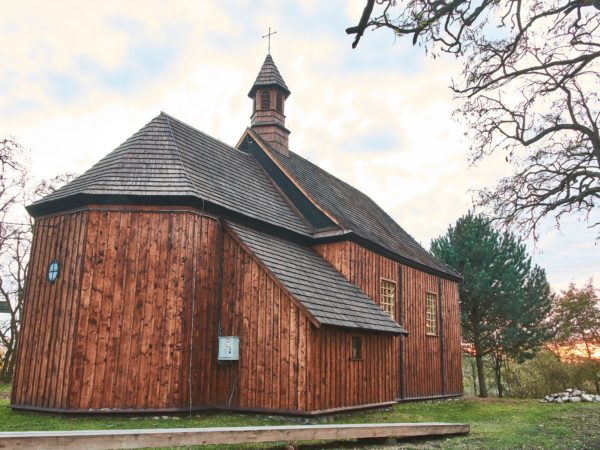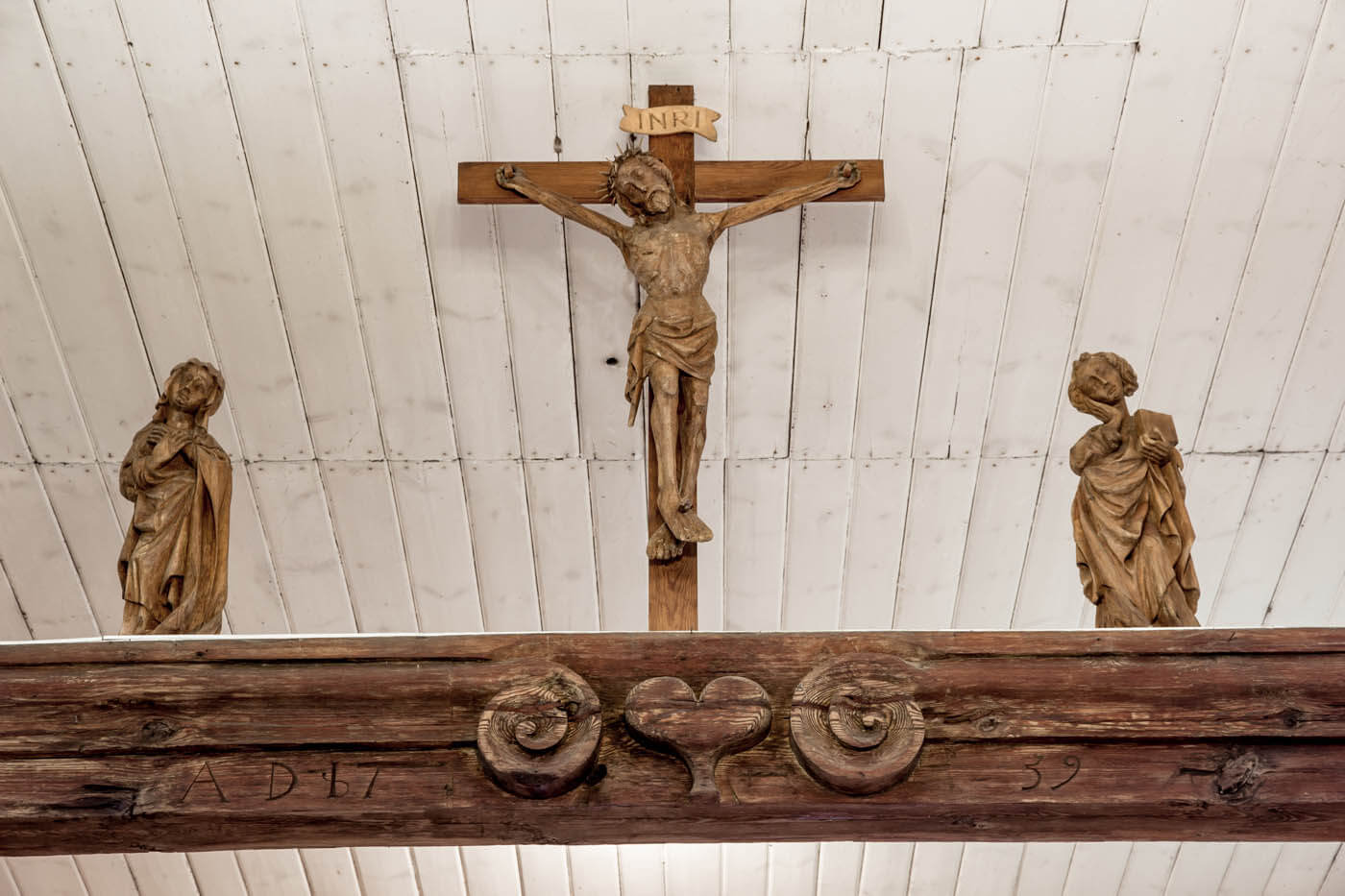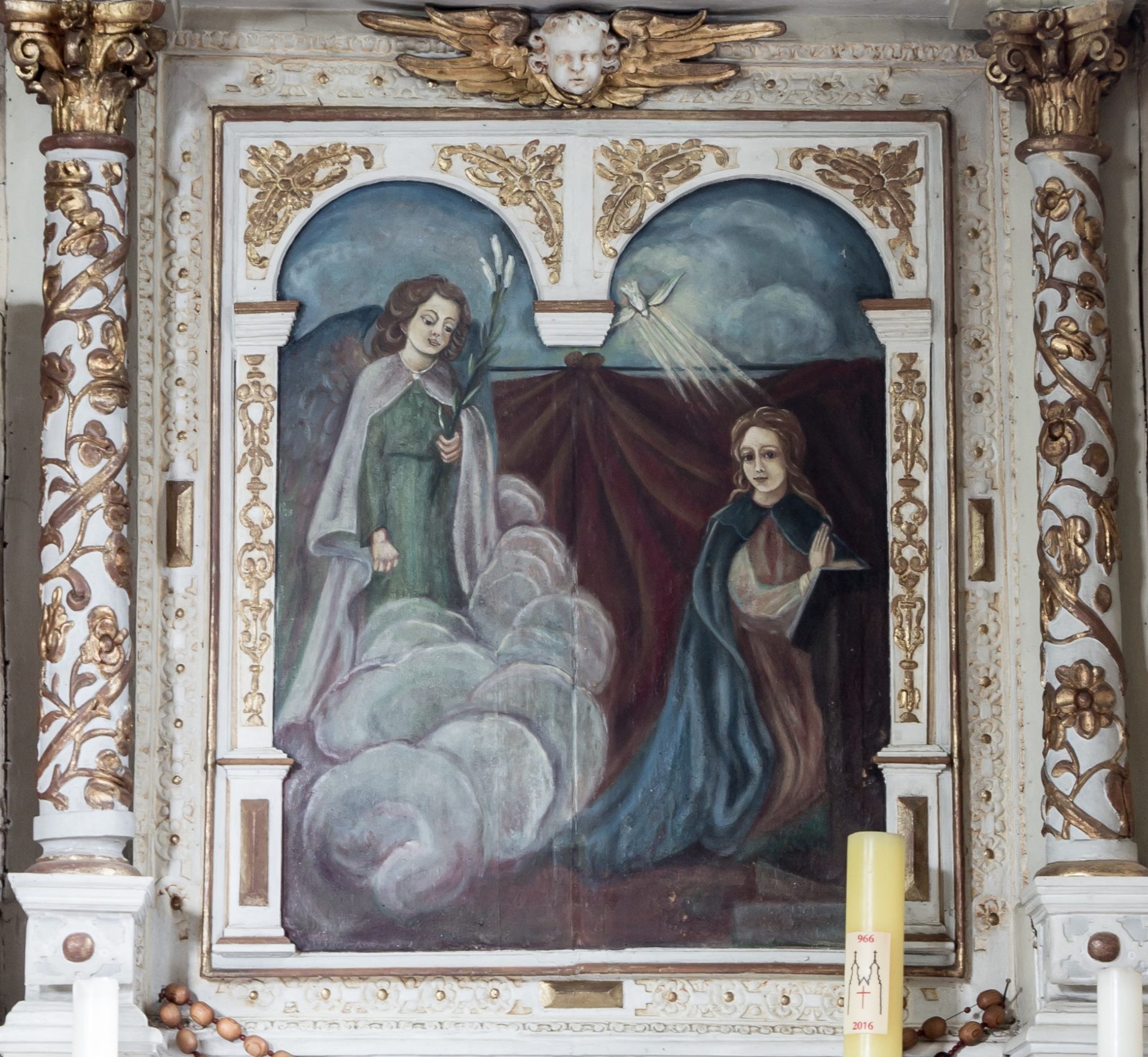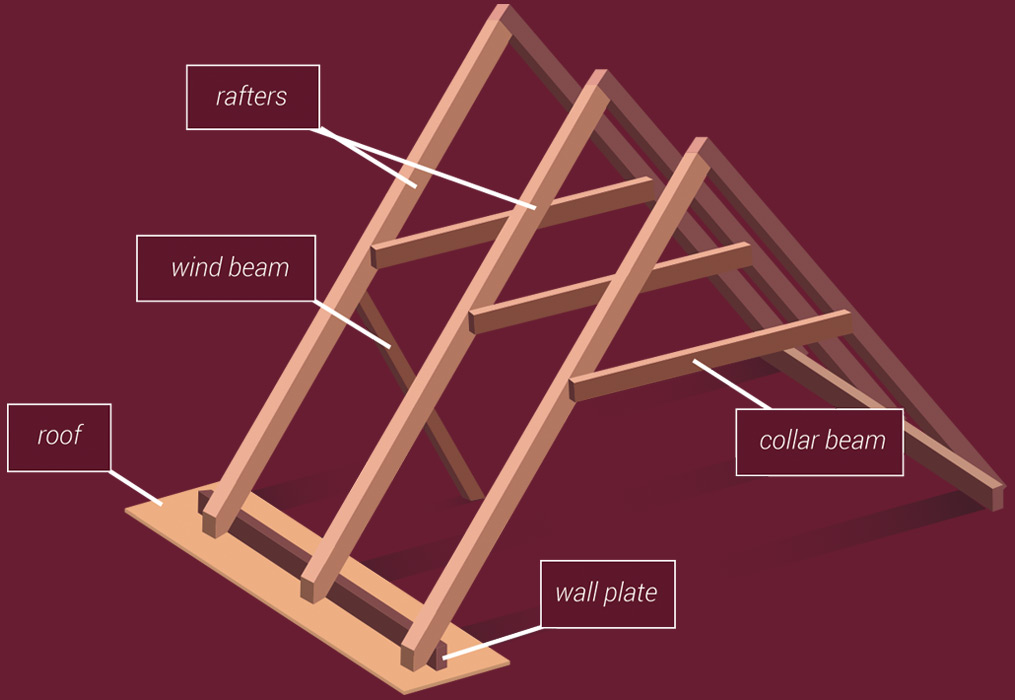
WALISZEWO: St. Catherine church
Date of construction: 1759Monuments
Mother bowed with grief appalling
The date of construction is confirmed by the date put of the rood beam – 1759. This place has a special meaning: it’s just below the vault between the chancel and the main nave which stands for a symbolic connection of sacrum of the chancel and profanum – the nave. The Polish name belka tęczowa refers to rainbow which links heaven and earth (in English “the rood beam” refers to its role: it supports a large cross at the entrance to the chancel).
A Crucifixion Group, which was created in the first quarter of the 15th century, was put on the rood beam. It is the oldest structure, older then the church itself. It points to a former, older church in the place of which a new building was erected.
Mother bowed with grief appalling
must thou watch, with tears slow falling,
on the cross Thy dying son!
Through my heart, thus sorrow riven,
must that cruel sword be driven,
as foretold – O Holy One!
Oh, how mournful and oppressed
was that Mother ever-blessed,
Mother of the Spotless One:
She, whose grieving was perceiving,
contemplating, unabating,
all the anguish of her Son!
13th century Latin song Stabat Mater Dolorosa

Sculptures are relatively small, made of unpainted wood. They were made in a coarse manner which resembled folk style.
Draped robes entwine calm, static figures whose expression is shown mainly by the tilting of their heads. Their poses don’t exactly convey sadness and pain after losing the loved one but rather reverie and grief. The figures symbolize reflection on the human life, maybe on its destiny. The wooden sculptures express experience and focus which accompanied the anonymous artist who was unmistakably inspired by “the divine spark” seen in those works of art.
Salvador Mundi
The central image of the main altar is a statue Salvador Mundi, i.e. the Savior of the World. It is a hieratic, majestic, frontal image of Jesus Christ shown as the Lord and God. The iconography of a traditionally reigning Christ depicts Him standing or sitting on a throne, holding an orb in His left hand and giving blessings with His right. In later periods, the orb was sometimes replaced with a globe with a cross on top. The image also shows the divine descent of Christ and God-given power over the world.

"May Your word to me be fulfilled.”

The side altar shows the scene of the Annunciation which is especially important because it presents the most crucial
Christian event, often depicted among the themes of religious art. The event from gospels mentioned here is not only an important moment in Mary’s life but has also an epochal significance for the history of humankind. In the history of salvation as presented by Christianity, the Annunciation is the moment when the fate of the world is decided, because Mary had a right to choose – she could accept or deny her calling.
Saint martyrs
On the altar’s crowning two figures were placed: of St. Barbara (with the tower) and St. Agnes (with the sword, lily and the lamb).
St. Agnes in Antiquity was one of the most popular saints. As a 12 year-old girl who came from an old family, she was to die a martyr’s death on a stadium of Domitian around 305. According to an old custom, two lambs are sacrificed on January 21 – to commemorate her death in defense of innocence. She died a martyr’s death by beheading with the means of the sword. She was supposed to die by burning at a stake but the saint was not injured. She was sentenced to death due to her denial of marriage proposal because she remained faithful to Christ. Agnes is the patron saint of children, maidens and gardeners.
St. Barbara was depicted with a tower where she was imprisoned because she did not want to renounce Christian faith. She was not given food in order to break her and make her denounce her faith. However, angels fed her with communion wafers during her imprisonment. Then, they tried to break her with tortures and humiliation. Eventually, she was beheaded with sword. St. Barbara is the patron saint of hard-working people: miners, steelmakers, sailors, soldiers and stone masons.

Artistry of Carpentry
Rafters are elements present in every building, integral to the construction. They are often underestimated witnesses of history which can provide much new information on a building’s story. A rafter roof with collar beam support in the church in Waliszewo is the evidence of that.
Carpenters used woodworking signs, which were graphic marks of construction elements. This allowed to fix the elements in a proper place. Sometimes a date was put – not only in reference to the date of construction of the church but also as a mark of its renovations – and the worker’s signature.



